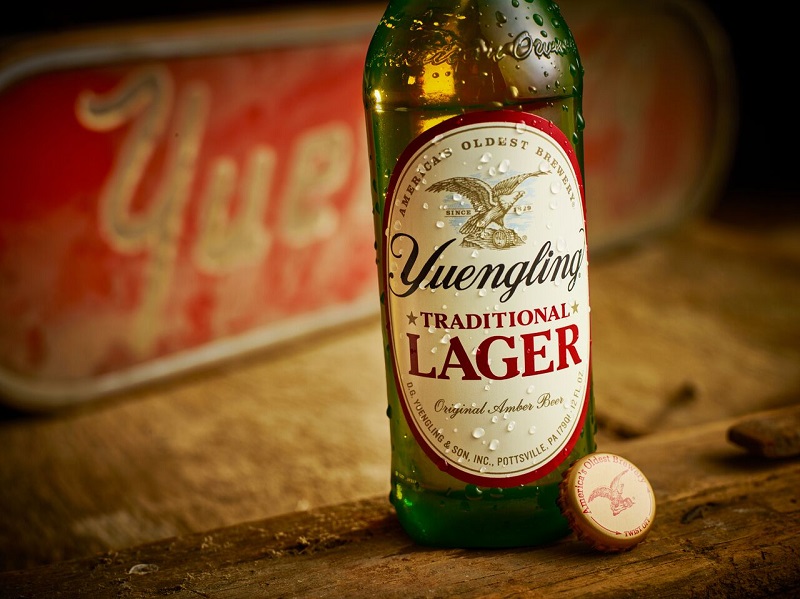When Yuengling Went the Traditional Route
In 1987, D.G. Yuengling & Son introduced an amber lager that was a throwback to the Pottsville, Pennsylvania, brewery’s first decade after the repeal of Prohibition in 1933.
Much like back then, the mid-1980s was a time of transition at the brewery—or, more accurately, a time of turnaround, though it would be years before anyone had the hindsight to know that.
Dick Yuengling Jr. had taken over the then-156-year-old, family-owned brewery from his ailing father in 1985. Things looked dire. The brewery was nearly bankrupt, producing a paltry 137,000 barrels annually.
What’s more, the American brewing industry was rapidly consolidating as bigger players such as Anheuser-Busch either gobbled up smaller fry such as Yuengling or simply muscled it out of markets. It seemed Yuengling would become yet another regional brewery people spoke of in the past tense.
Then, Dick Yuengling started a modernization that meant not only updating equipment but also introducing new products. This included a so-called Black & Tan, born of combining existing lager and porter recipes, as well as a light beer, a way into the most popular style America had yet produced.
The new products also included what the company called Yuengling Traditional Lager.

(Photo courtesy D.G. Yuengling & Son)
Yuengling’s experience with lager stretched back to at least the 1840s. That was when its founder, David Yuengling, a German immigrant, secured the proper yeast to become one of America’s first commercial lager producers. He also took advantage of caverns dug into a mountain behind the brewery—perfect for brewing lager, which generally needs cooler fermentation and aging temperatures.
By 1934, the year after repeal, Yuengling was brewing a brand it called, simply, “Lager Beer.” This was itself a throwback to Yuengling’s output 90 years before under David Yuengling.
The public’s taste for heavier lagers soon waned, however, with lighter-tasting iterations such as pilsners famously cornering much of the mid-20th-century market instead. Around 1940, according to the brewery, Yuengling pivoted away from Lager Beer to more popular pilsners and even ales.
It took those trying times in the mid-1980s, when it looked like Yuengling would go the way of so many other regional breweries, for the company to reconsider leading with a lager.
Longtime brewmaster Ray Norbert spent a portion of 1987 tweaking the recipe, drawing inspiration and ideas from the brewery’s earlier lagers, and Yuengling Traditional Lager debuted on Nov. 1.
With its amber hue, crisp bitterness and slightly sweet finish, it was more akin to the crop of newer brands from what were then called micro-breweries. And those brands accounted for an infinitesimal slice of the American beer marketplace. Yuengling’s new light beer seemed a much better commercial bet as a flagship than its new amber lager.
Yet it was the latter that proved a smash hit.
Traditional Lager would soon account for the vast majority of Yuengling’s growing output, a fact that remains true today.
It didn’t hurt that, shortly after the 1987 introduction, Yuengling launched a general sales-and-marketing effort. The brewery doubled down in particular on its home turf, pushing into more of eastern Pennsylvania, New Jersey and Delaware; and pulling back from New York City and New England.
By the end of the 1980s, Yuengling became the best-selling brewery on draft in the Philadelphia region, no small feat for a smallish brewery in those days. Yuengling soon expanded into other markets, including back into the New York area and much of New England.
Production increased to nearly a quarter-million barrels annually. To slake the demand, Yuengling opened two more breweries, including one in an old Stroh plant in Tampa, Florida.
Yuengling also kept introducing new beers—a bock, a pale ale, a wheat beer, an Oktoberfest, even a fashionable India pale lager.
None would have the staying power of that Traditional Lager the then-struggling brewery first dropped three decades back.
Read more Acitelli on History posts.
Tom Acitelli is the author of The Audacity of Hops: The History of America’s Craft Beer Revolution and the forthcoming Whiskey Business: How Small-Batch Distillers Are Transforming American Spirits. He is at work on a biography of Michael Jackson.

I remember back in the late 80’s and early 90’s when the demand for Black and Tan went through the roof. You had a hard time finding it. Distributors would only get a few cases allotted to them. My distributor would hold a case for me, 16 OZ cans. Yuengling eventually outsourced it to a larger brewery in Allentown, PA….now the Samuel Adam’s plant. It was, and still is, a fine beer.
I remember when you could only get it st a bar by having the bartender mix it himself. That was great.